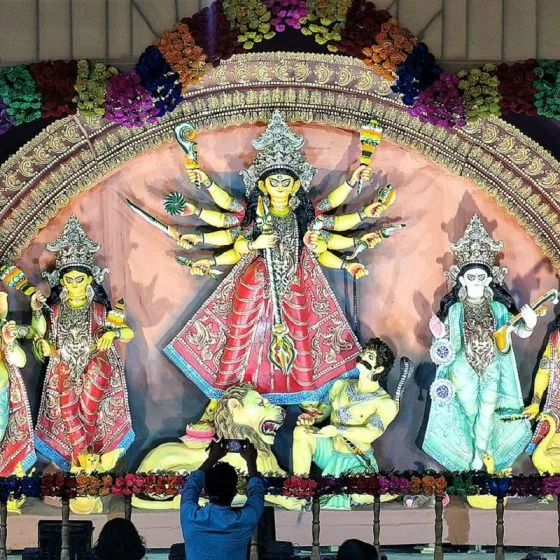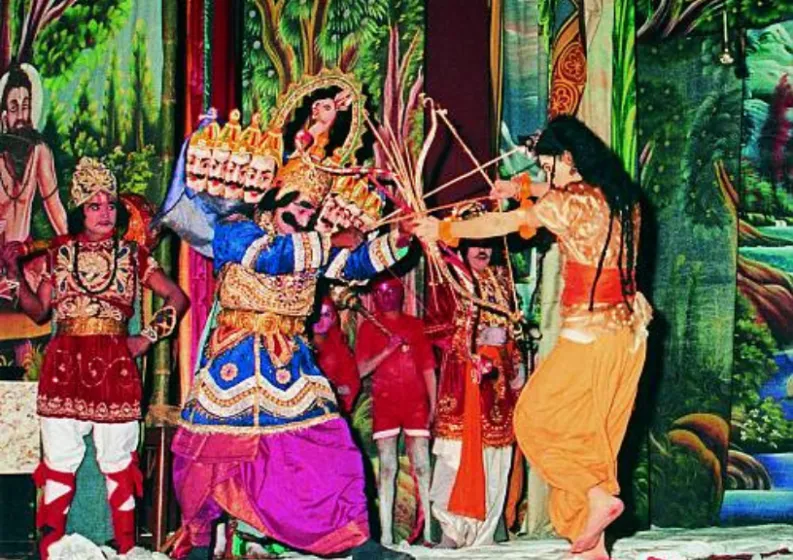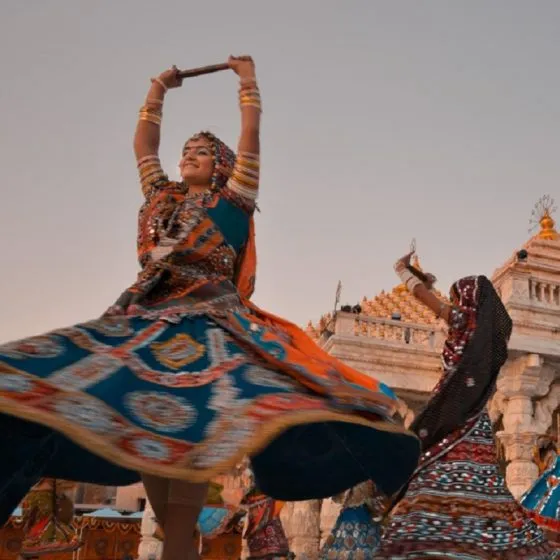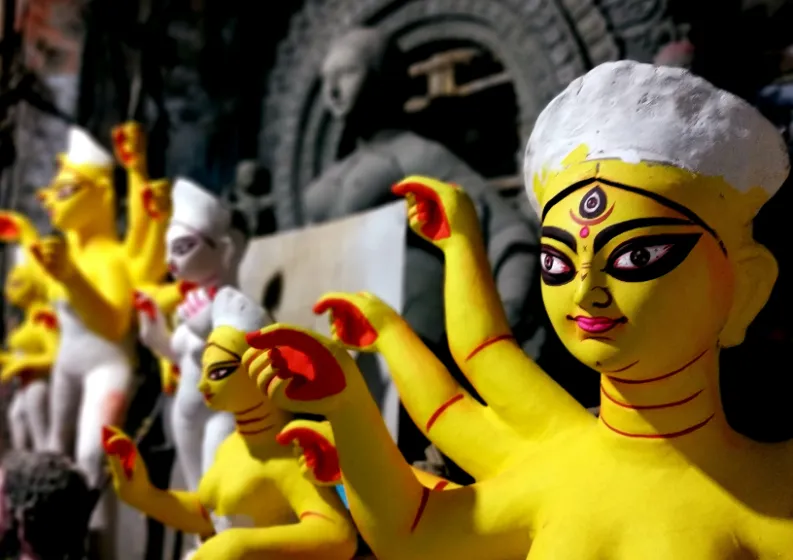Although the Hindu festival revolves around worshipping various forms of Goddess Durga, it is a nine-day celebration of Lord Rama’s win over Lankan demon king Ravana. Additionally, Durga Puja marks the victory of the Goddess over the demon Mahishasura. Moreover, the festival is majorly celebrated in the East and Navaratri mainly in other parts of the country. And, the ways to worship Goddess Durga also differ — while some devotees prefer to feast, others fast.
This year, Navaratri begins on September 26 and ends on the fifth of the following month. Meanwhile, Durga Puja is to be celebrated from October 1. Marking the end of the festivities, Dussehra or Vijayadashami is falling on October 5.
As the festive season draws closer, the streets of various cities are decked up to welcome the divine in all her glory with enthusiasm and positive vibes.
Be it stage and pandal decorations, planning cultural fests, dancing the night away or preparing elaborate meals for devotees (bhog), all become part of the festivities that lead to worshipping the goddess. In some states the idol of Goddess Durga is immersed in water on the 10th day (visarjan), while others celebrate Dussehra by burning the effigies of demons, including Ravana, Kumbhkarana and Meghanada.
Read more : Singapore Food Festival is on at DLF Promenade till September 11: An exclusive preview
Over the last couple of years, Durga puja celebrations bore the brunt of the COVID-19 pandemic, which forced state governments to implement a slew of restrictions on holding processions and visiting pandals, among other rules. However, no such guidelines have been issued yet by governing bodies this year, but organising committees of pandals and congregations might have basic rules like wearing masks and maintaining social distancing.
West Bengal (durga puja)

Durga Puja is one of the most-awaited events in West Bengal. Preparations to welcome Goddess Durga, who is often referred as Maa, or mother, begin about a month before the scheduled date. While the streets of Kolkata are lit up with elaborate lighting during the night, magnificent pandals and ornate idols are set up at various places across the state. Flocking to Durga Puja pandals, dancing to the tunes of dhak (a percussion instrument) and feasting on scrumptious bhog are part of the celebrations.
One of the most significant events marking the last day of the Durga Puja is Sindoor Khela where married Bengali women usually smear vermilion or sindoor on each other’s faces. This takes place after bidding adieu (darpan visarjan) to the goddess. On this day, called Dashami, devotees immerse the idols in a water body to only wait for her return the following year. If you are a first-timer at to witness the festivities, you must visit one of the pandals see this yourself.
Uttar Pradesh & Bihar

When it comes to celebrating Durga Puja in Bihar, rituals are similar to those of UP — both states mark the last day of the puja by feeding young girls (kanya pujan). Altars are propped up for Goddess Durga, and the Durga Saptashati is recited to praise the goddess as the supreme power.
In both states, Navratri is marked by Ramlila — a performance based on the life of Lord Rama, including the kidnapping of his wife Sita by Ravana and the victory of good over evil. It is staged across the states in theatres as well as on temporary platforms, specially created for such acts.
Gujarat

Ardent devotees of the goddess fast for nine days to pay respect to the nine incarnations of Durga. Women who fast, worship an earthen pot or garbo, decorated with diyas or earthen lamps. The pot symbolises life within a womb and is considered a source of shakti (power).
From observing fasts to performing the famous Garba — a dance where men and women circle the idol or the garbo — the people of Gujarat surely know how to celebrate festivities with gusto. They, too, conclude Durga Puja festivities by feeding young girls and giving either money or gifts to them.
Chhattisgarh(durga puja)

People of Chhattisgarh, especially the tribals of Bastar, go all out when it comes to celebrating Navratri. The Bastar tribe holds a 75-day-long celebration, bringing the festivities to a close on the 13th day of the waxing moon or shukla paksha.
The tribe also follows a five-centuries-old festival called Bastar Dussehra where the idols of Devi Maoli and her sisters are carried in a procession from Bastar to the Danteshwari Temple in Jagdalpur.



1 Comment
Pingback: weekend.! These events in August will ensure you have fun-filled